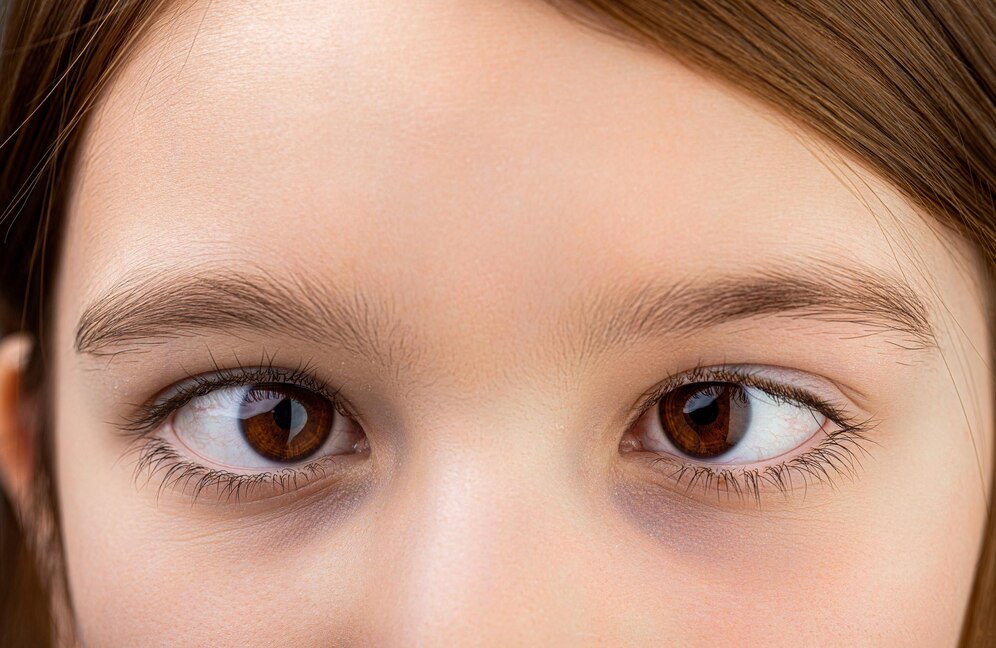Strabismus Surgery Turkey - Squint, Lazy Eye Correction Antalya
Strabismus, commonly known as crossed or misaligned eyes, is a vision condition that affects millions of people worldwide, including children and adults.
This condition occurs when the eyes do not align properly and work together as a team, leading to one eye deviating inwards, outwards, upwards, or downwards. Strabismus can result in impaired depth perception, double vision, and aesthetic concerns. Fortunately, various treatments are available to correct strabismus and improve the alignment of the eyes. In this comprehensive article, we will explore strabismus, its causes, types, symptoms, and the diverse approaches to treatment that can help individuals with this condition lead fulfilling lives.

Strabismus is a vision disorder characterized by the misalignment of one or both eyes. The condition can manifest in several ways:
- Esotropia: One eye turns inward towards the nose, often referred to as "crossed eyes."
- Exotropia: One eye turns outward away from the nose, sometimes called "wall-eyed."
- Hypertropia: One eye turns upward, causing a misalignment vertically.
- Hypotropia: One eye turns downward, leading to vertical misalignment.
Strabismus can be constant or intermittent, meaning the eye misalignment occurs all the time or only under specific circumstances, such as when the individual is tired or focusing on a near object.
Causes of Strabismus
The precise cause of strabismus can vary among individuals and may involve a combination of factors:
- Muscle Imbalance:Muscle Imbalance: Often, strabismus results from an imbalance in the muscles responsible for controlling eye movement. If one muscle is weaker or stronger than its counterpart, it can cause the eye to deviate.
- Refractive Errors: Uncorrected refractive errors, such as nearsightedness, farsightedness, or astigmatism, can contribute to strabismus, especially in children.
- Neurological Conditions: Certain neurological conditions or disorders affecting the brain's control of eye muscles can lead to strabismus.
- Heredity: Strabismus can run in families, indicating a genetic predisposition.
- Eye Injury or Disease: Trauma, eye infections, or diseases like cataracts can cause strabismus in some cases.
Symptoms of Strabismus
The symptoms of strabismus can vary depending on its severity and whether it is present all the time or intermittently. Common signs and symptoms include:
- Visible Eye Misalignment: The most apparent sign is the noticeable misalignment of one or both eyes.
- Double Vision: Strabismus can lead to double vision because the eyes are not focused on the same point.
- Squinting or Closing One Eye: People with strabismus may squint or close one eye to alleviate double vision.
- Impaired Depth Perception: Reduced depth perception can affect activities like catching a ball, judging distances, or pouring liquids accurately.
- Head Tilting: Some individuals may tilt their heads to align their eyes better and reduce double vision.
Treatment Options for Strabismus
The treatment of strabismus aims to correct the misalignment of the eyes and improve visual function. The choice of treatment depends on factors such as the type of strabismus, its severity, and the age of the patient. Common treatment options include:
- Eyeglasses or Contact Lenses: Correcting refractive errors with prescription glasses or contact lenses may be the first step in treating strabismus, particularly in cases where refractive errors are a contributing factor.
- Vision Therapy: Vision therapy, also known as orthoptics or eye exercises, involves a series of exercises and activities designed to improve eye muscle coordination and visual skills. It is often used in conjunction with other treatments.
- Prism Lenses: Prism lenses can help align the images seen by each eye, reducing double vision and the need for head tilting. These lenses can be added to eyeglasses.
- Eye Patching or Atropine Drops: For children with amblyopia (lazy eye) resulting from strabismus, patching the stronger eye or using atropine drops to blur the vision in the stronger eye can encourage the weaker eye to develop better visual acuity.
- Botox Injections: In some cases, Botox injections may be used to temporarily weaken or relax specific eye muscles, allowing for improved alignment.
- Surgery: Surgical correction of strabismus, known as strabismus surgery, is an option for individuals with severe or persistent misalignment. During the procedure, the surgeon adjusts the eye muscles' tension to align the eyes properly.
Benefits of Strabismus Treatment
Treating strabismus offers numerous benefits, including:
- Improved Eye Alignment: Treatment can lead to the proper alignment of the eyes, improving both aesthetics and function.
- Reduced Double Vision: Correcting strabismus can eliminate or reduce double vision, enhancing visual comfort.
- Enhanced Depth Perception: Treating strabismus can restore depth perception, allowing individuals to engage in activities requiring accurate depth judgments..
- Improved Self-Esteem: For individuals with noticeable strabismus, successful treatment can boost self-esteem and confidence.
- Prevention of Amblyopia: Early intervention can prevent the development of amblyopia, a condition that can lead to permanent vision loss in one eye.
A Clearer Future
Strabismus is a vision condition that can significantly impact an individual's quality of life, but it is treatable. Timely intervention by a qualified eye care professional can correct misalignment, improve visual function, and enhance overall well-being. Whether through eyeglasses, vision therapy, surgery, or a combination of treatments, the goal of strabismus treatment is to offer individuals a brighter and clearer future where they can enjoy a lifetime of better vision and improved confidence.

